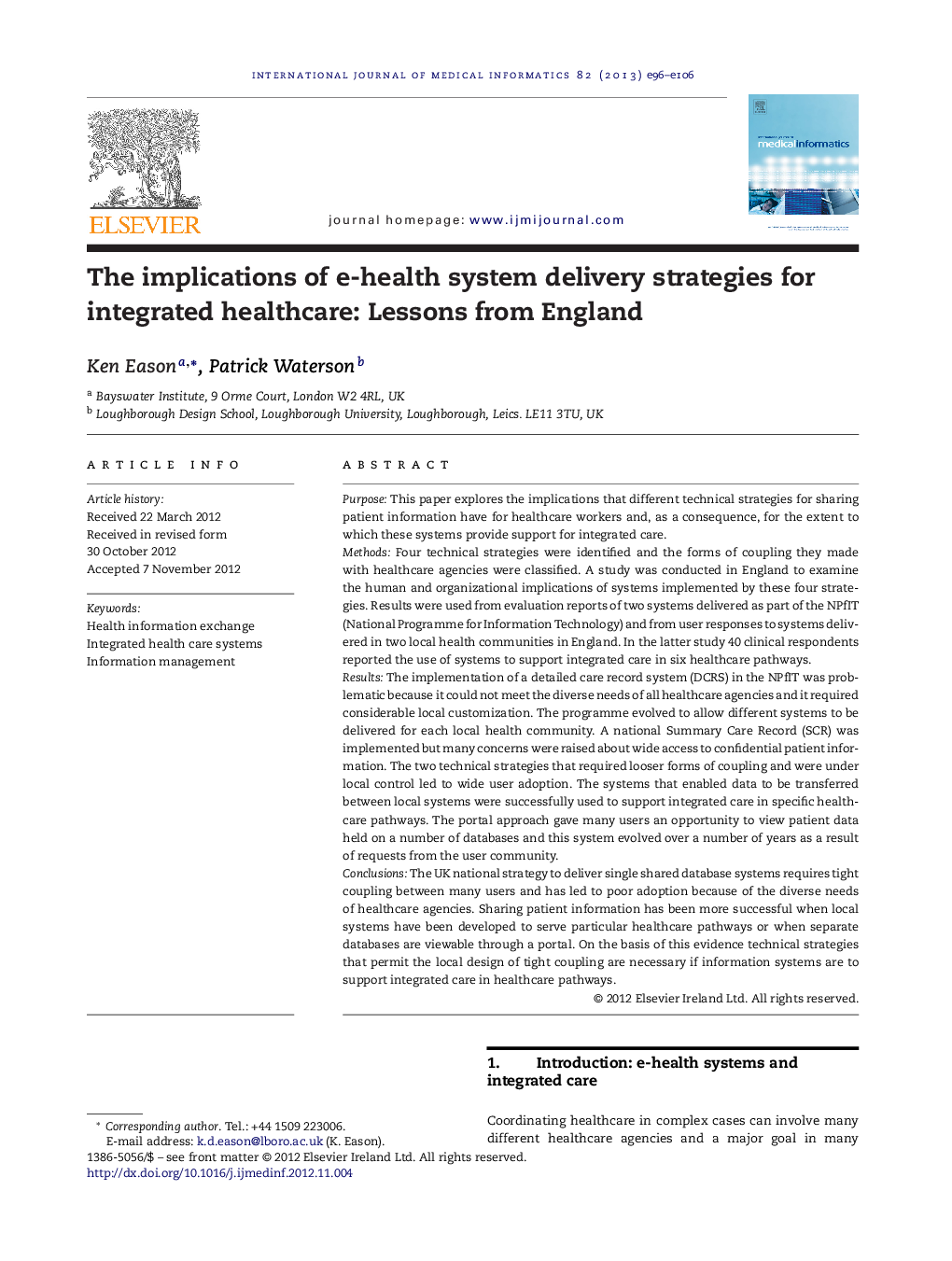| کد مقاله | کد نشریه | سال انتشار | مقاله انگلیسی | نسخه تمام متن |
|---|---|---|---|---|
| 516176 | 1449135 | 2013 | 11 صفحه PDF | دانلود رایگان |

PurposeThis paper explores the implications that different technical strategies for sharing patient information have for healthcare workers and, as a consequence, for the extent to which these systems provide support for integrated care.MethodsFour technical strategies were identified and the forms of coupling they made with healthcare agencies were classified. A study was conducted in England to examine the human and organizational implications of systems implemented by these four strategies. Results were used from evaluation reports of two systems delivered as part of the NPfIT (National Programme for Information Technology) and from user responses to systems delivered in two local health communities in England. In the latter study 40 clinical respondents reported the use of systems to support integrated care in six healthcare pathways.ResultsThe implementation of a detailed care record system (DCRS) in the NPfIT was problematic because it could not meet the diverse needs of all healthcare agencies and it required considerable local customization. The programme evolved to allow different systems to be delivered for each local health community. A national Summary Care Record (SCR) was implemented but many concerns were raised about wide access to confidential patient information. The two technical strategies that required looser forms of coupling and were under local control led to wide user adoption. The systems that enabled data to be transferred between local systems were successfully used to support integrated care in specific healthcare pathways. The portal approach gave many users an opportunity to view patient data held on a number of databases and this system evolved over a number of years as a result of requests from the user community.ConclusionsThe UK national strategy to deliver single shared database systems requires tight coupling between many users and has led to poor adoption because of the diverse needs of healthcare agencies. Sharing patient information has been more successful when local systems have been developed to serve particular healthcare pathways or when separate databases are viewable through a portal. On the basis of this evidence technical strategies that permit the local design of tight coupling are necessary if information systems are to support integrated care in healthcare pathways.
► Links between electronic patient databases and healthcare agencies are defined in terms of tightness of coupling, range and scale.
► The English Detailed Care Record System was unable to serve the diverse needs of healthcare agencies and was not successfully deployed.
► Tight coupling was successfully deployed at a local level between agencies engaged in integrated care in healthcare pathways.
► Widespread uptake was also found when portal systems were deployed that permitted viewing of a range of patient databases.
► Adoption of patient databases was greater when there was middle-out design and technical strategies delivered looser forms of coupling.
Journal: International Journal of Medical Informatics - Volume 82, Issue 5, May 2013, Pages e96–e106